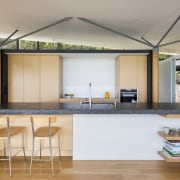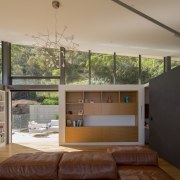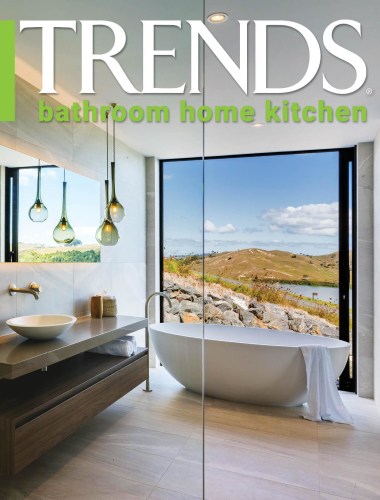Sculpted steel roof and other passive strategies give this home control over the sun’s rays
This contemporary seaside home makes the very most of the beauty of our planet and also gives back via a sustainable design ethos
The design of this coastal home responds to several imperatives – from making the most of the views to efficient control over our nearest star.
Located on a tiny, steep hillside section, the family home – by architect Wulf Borrmeister – is designed to connect the openness of the beach with the forested, steeply sloping hills behind.
“The brief was for a relaxed, playful home that’s open to the sun, while capturing the views to the beach and to the uphill park behind,” says Borrmeister.
“At the same time, it had to provide shelter from the prevailing winds and include easy driveway access and parking.
“And sustainability principles also inform the design at every turn.”
In order to tackle the extremely difficult site, the house was designed around a strict 1.2m grid.
This resulted in a very simple rectangular footprint, stretching over three levels.

The stone-faced basement walls – utilising rock excavated from the site – seem to grow directly out of the rock face, anchoring the large home both engineering-wise and visually.
However, the upper floors are designed to be light, sun-filled and open, consisting mainly of glass facades behind cedar sliding screens.
The screens provide passive sun control – admitting the low-slanting winter sun and shading out the higher summer sun – as well as facilitating natural cross ventilation, and also privacy.
The home is crowned with a light, sail-like roof that appears to float on tree-like timber and steel support structures. As with the screens, the roof provides control over the sun’s rays.
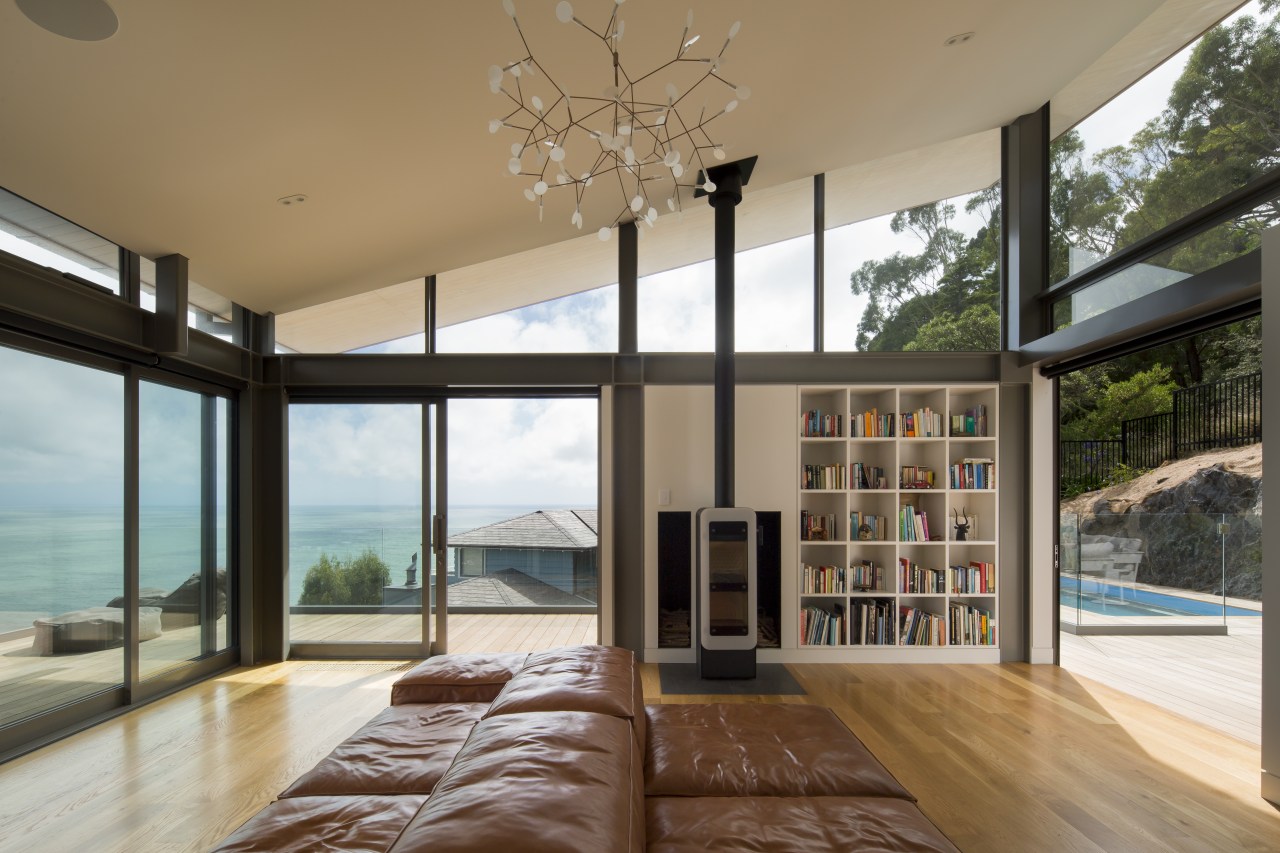
“Curving up at one corner, the roof is designed to follow the home’s daily sun path,” says the architect.
“This allows for solar penetration into the interior in the morning but keeps the sun at bay during the warmer afternoon hours.”
In addition, the hard-working sculptural steel roof supports photovoltaic technology, helping to power the home.
In terms of layout, the home’s top level has an open-plan kitchen, dining and lounge area, a snug, small study and a toilet.
This naturally gives the public spaces the prime outlooks. The entertainer’s kitchen, with American White Oak cabinetry, was designed by Ingrid Geldof Design
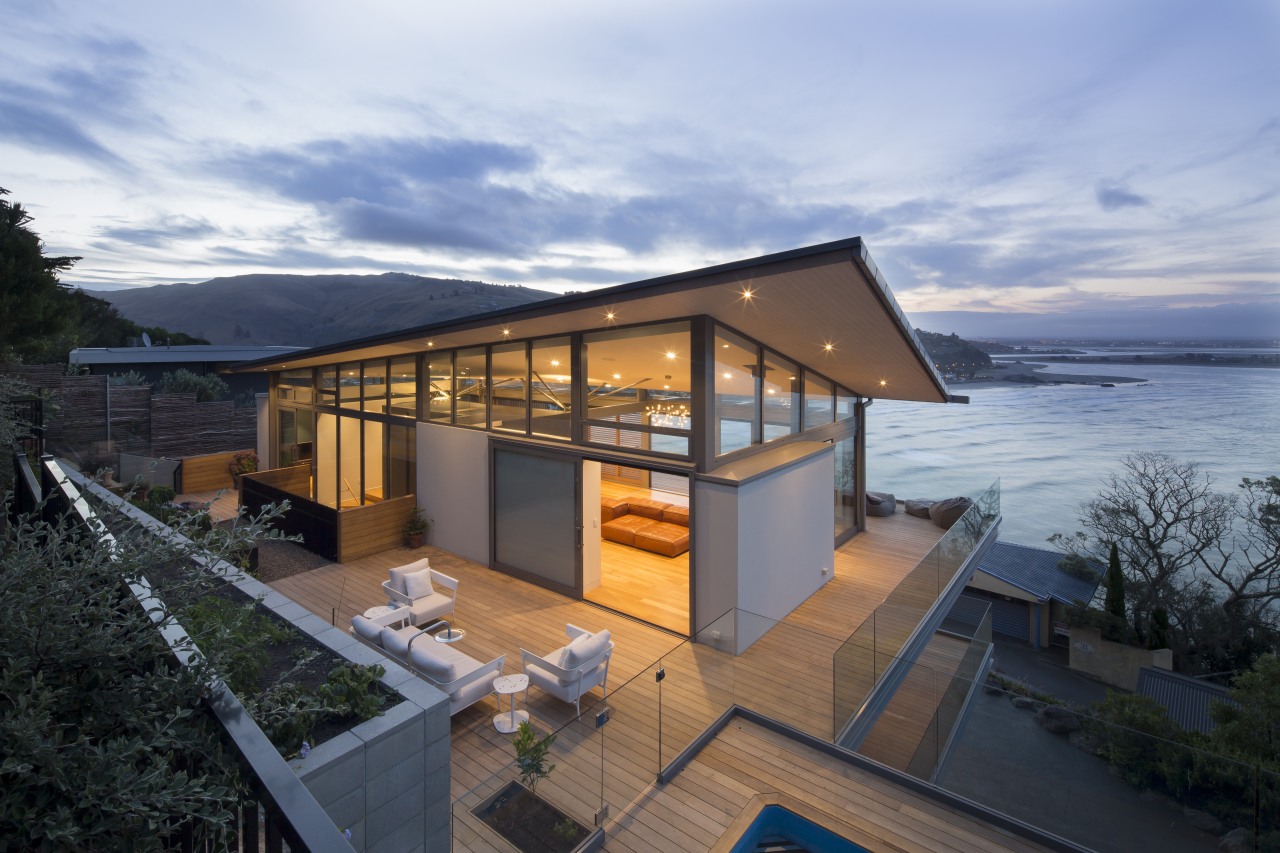
At mid level are the three bedrooms, dressing rooms, bathrooms, a laundry and sauna. A double garage with storage is at basement level.
“Large timber decks connect the home with a rear pool, an outdoor shower, a veggie garden, an open seating area and the hillside behind.”
And an emphasis on low-upkeep materials adds to the overall sustainability of the home. Exterior materials include plaster, corrugated ColorSteel and the aforementioned excavated stone. The rugged materials are matched with a simple interior material palette of wood floors, light and dark-painted walls and wallpaper.
Further features include the compact and economical footprint, rainwater retention tanks for garden irrigation, fully automated external louvres and an ultra-low emission log burner.
Credit list
Architect and interior designer
Kitchen design
Landscape design
Cladding
Window/door joinery
Kitchen and guest toilet pod
Heating
Balustrades
Splashback
Oven
Ventilation
Awards
Builder
Kitchen manufacturer
Pool design
Roof
Main flooring
Paint
Screens/louvres
Kitchen cabinetry
Benchtops
Sink
Hob
Refrigerator, dishwasher
Story by: Charles Moxham
Photography by: Sarah Rowlands
Home kitchen bathroom commercial design
Home Trends Vol. 36/1
While a bathroom may no longer be regarded as 'the smallest room' in a home, the extra space now allocated to it doesn't...
Read More



